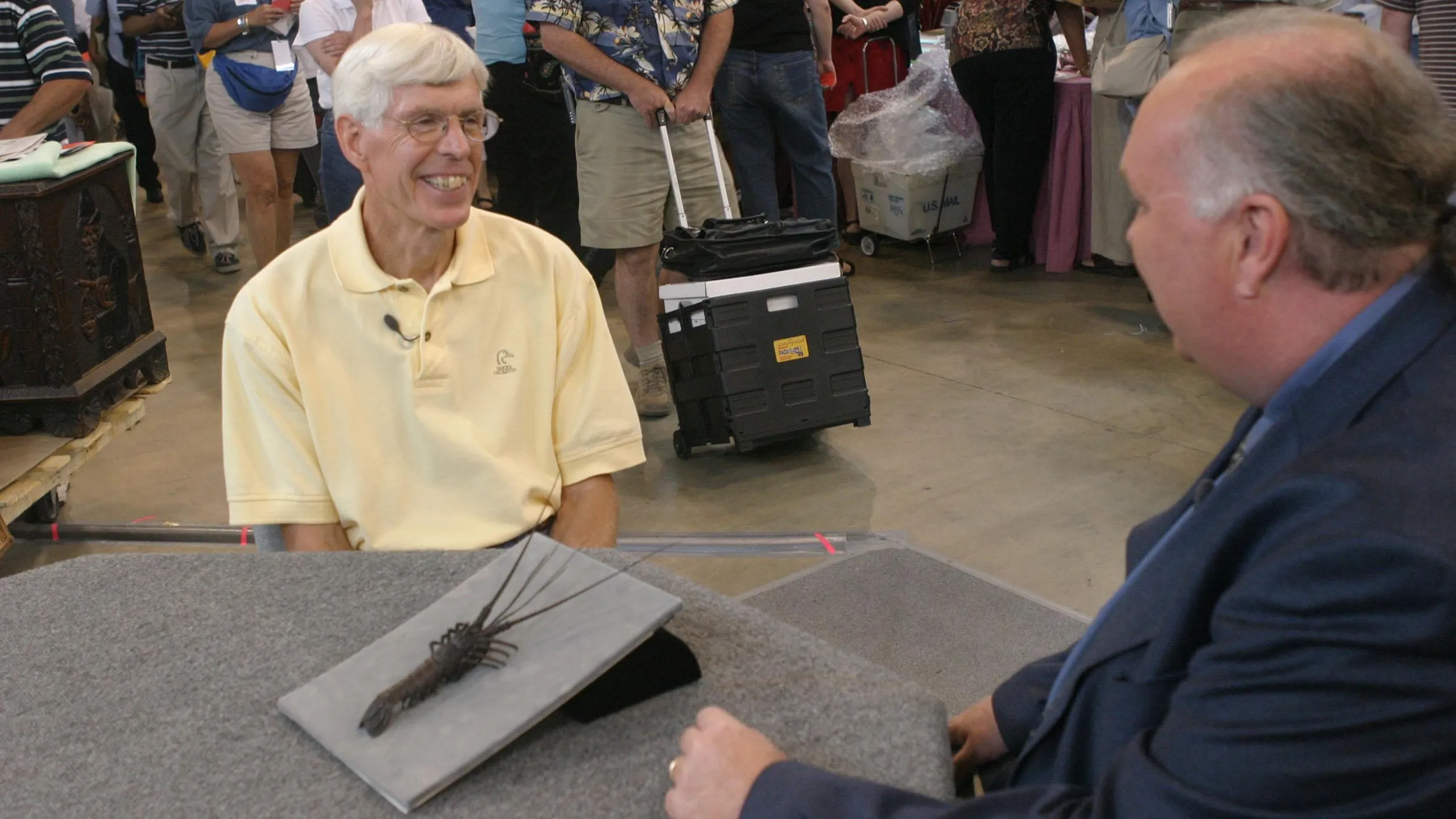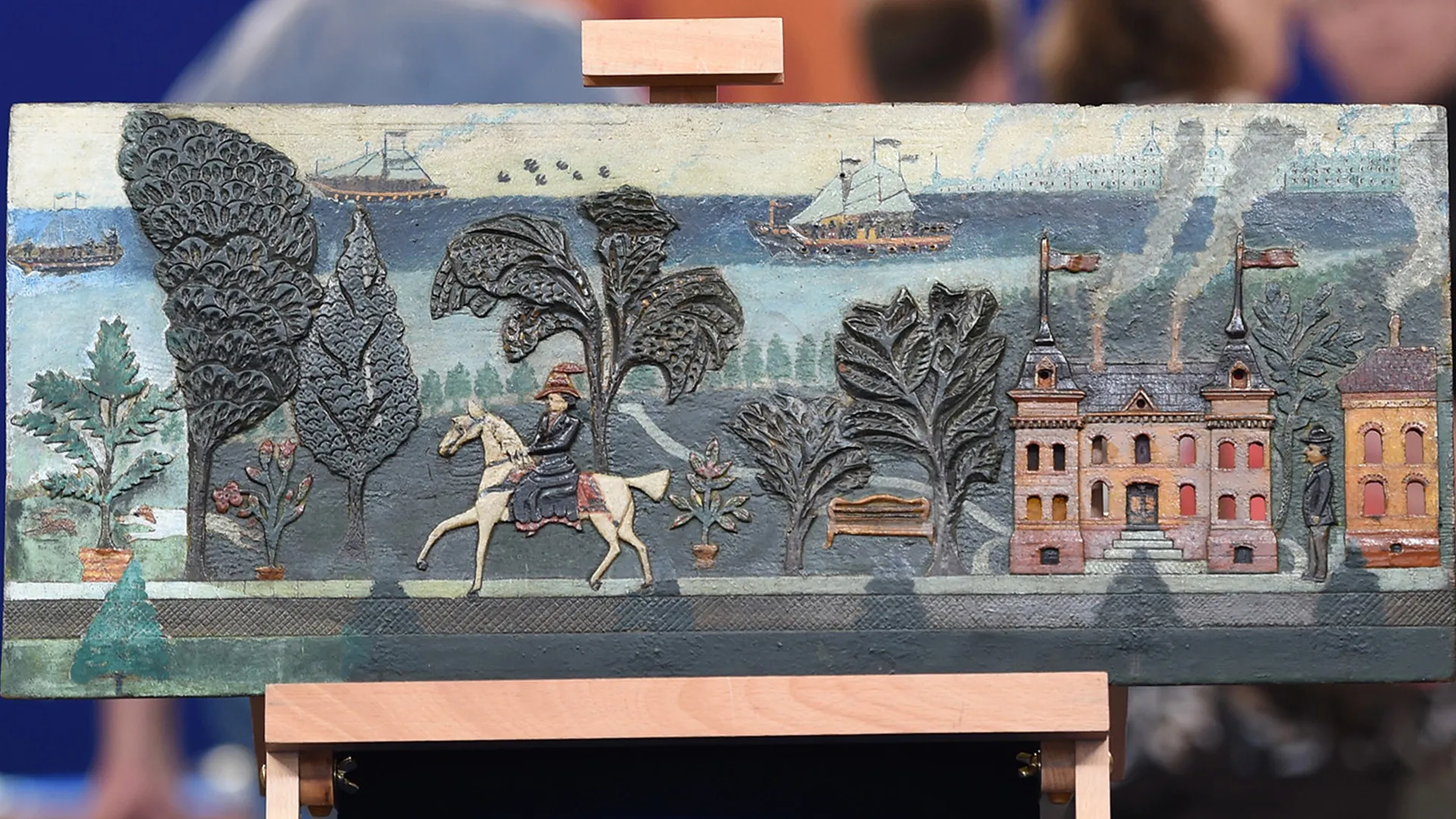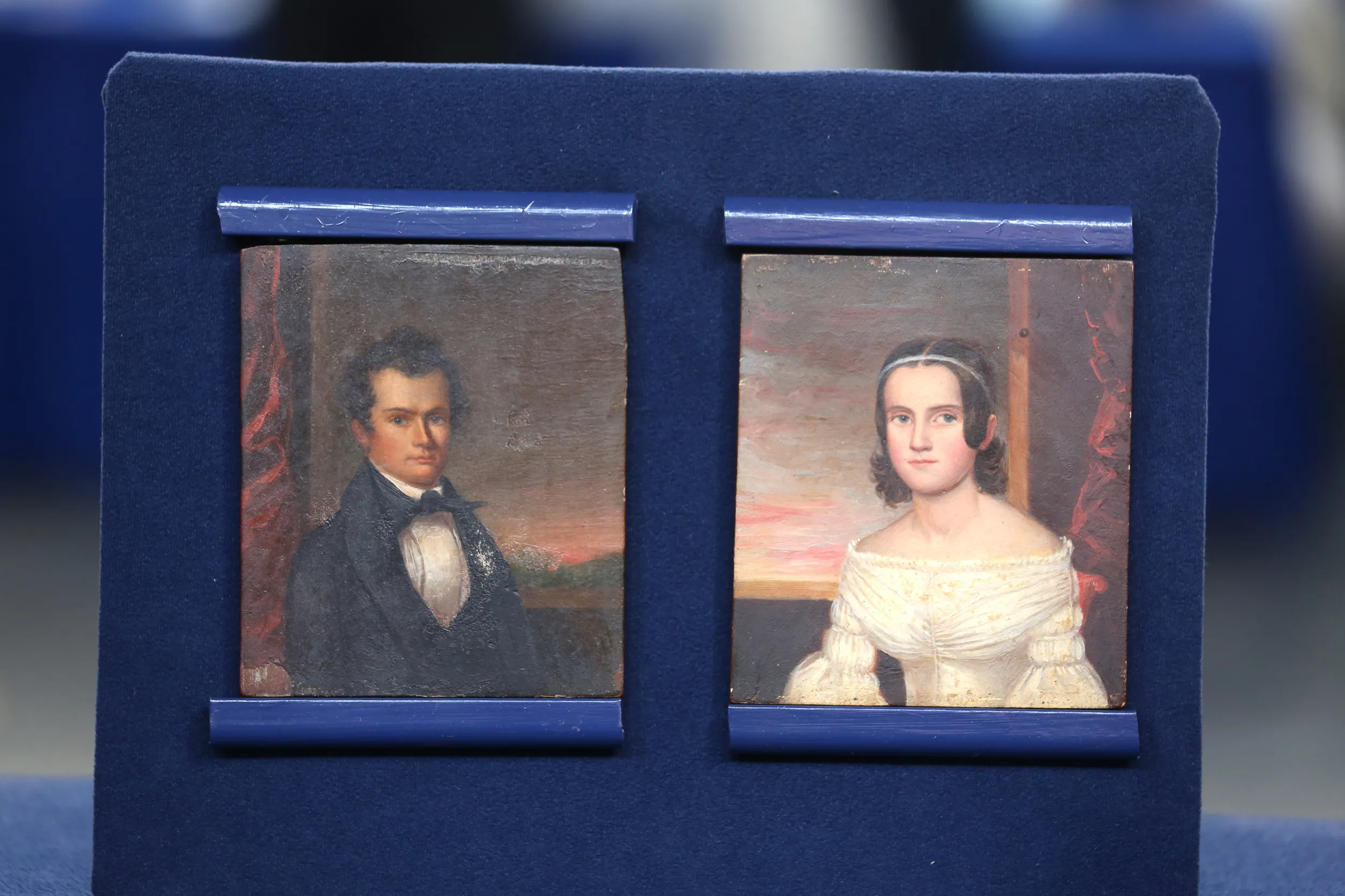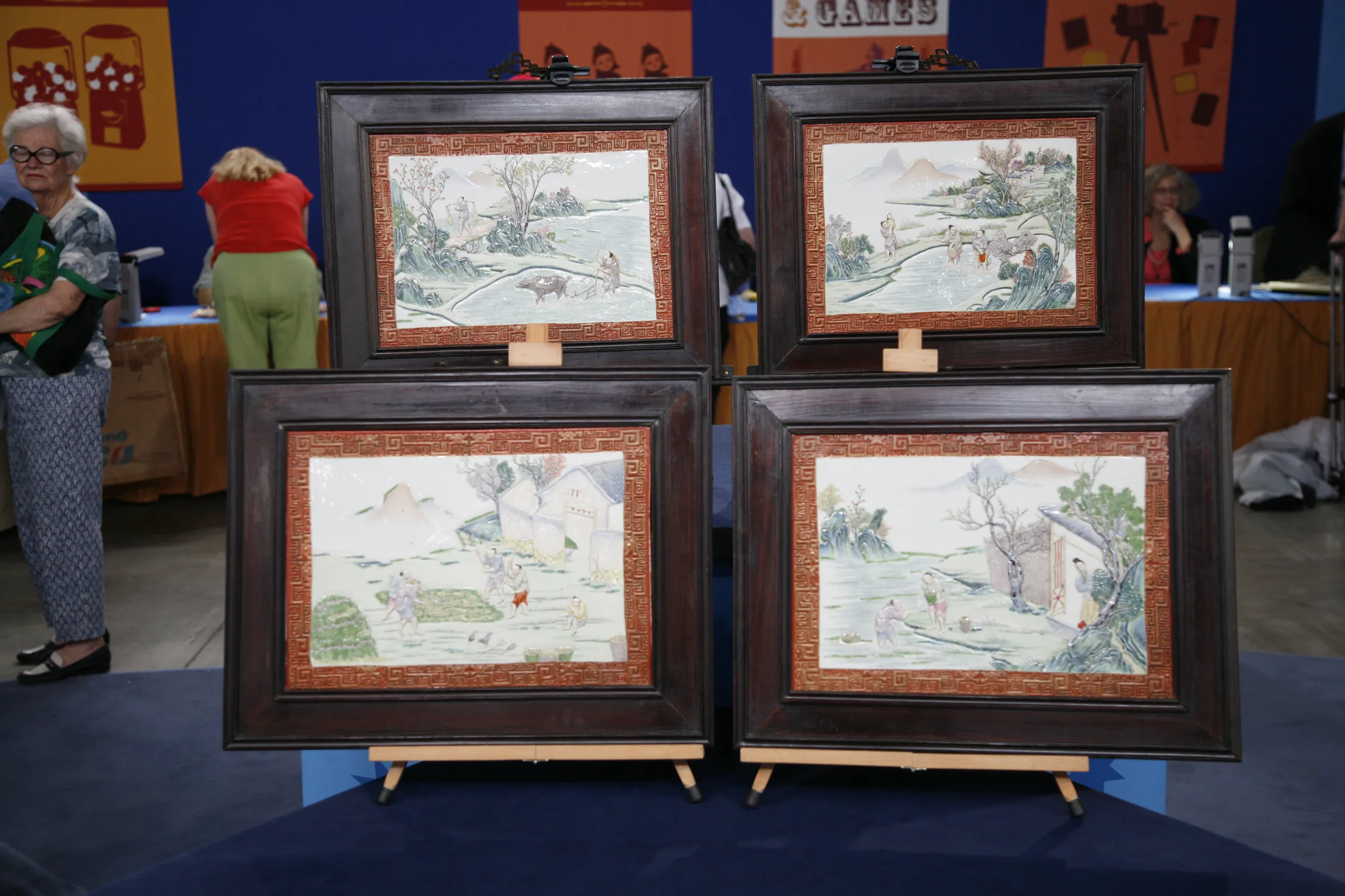GUEST: Back around the turn of the century, Marshall Field's put in a Men's Grill restaurant. And Mrs. Field was in charge of decorating it, and she contracted with Tiffany to put in a ceiling. Then, about 1948, Field's remodeled the restaurant. Well, a friend of my in-laws was a carpenter on this job, and he asked if he could take some of the glass. Then 1968, he asked us if we wanted this glass.
APPRAISER: Mm-hmm.
GUEST: But he said with the condition that we do not destroy it, and he gave us the history. Then, about three years ago, I was going through Field's, and they had a display, including that picture, of the old Men's Grill.
APPRAISER: You've brought a great piece of Chicago history, and you also brought a wonderful example of stained glass that was produced by the Tiffany Studios. What's terrific is that in some way, part of the ceiling has survived. Now, how many panels do you have?
GUEST: We have four roundels.
APPRAISER: Right.
GUEST: We have two-- two-and-a-half, actually-- of a large panel.
APPRAISER: Okay.
GUEST: And we have this one we keep... that we put up in back of our bar.
APPRAISER: Okay, well, if we look closely at the picture, you can see, right over there is one of the roundels. Well, actually, many of the roundels, because they surrounded this big elliptical piece of glass here. And then that piece right there is one of these rectangular vertical panels, and then this piece is one of the pieces that goes along the edge. Now, the Great Fire happened in 1871, and after the Great Fire, it was time to rebuild the city.
GUEST: Right.
APPRAISER: And Chicago was very fortunate, because a lot of European stained glass artists came over to the country at this point. There were over 50 firms that specialized in stained glass, but in this case, Tiffany was commissioned to do the work here, because he really was the most famous at the time for stained glass. And what really surprised me when I saw this is that I'm looking at the style, and I thought, "You know, this looks as though it were Tiffany from the 1880s." But then I started to think about it more, and I realized that he was trying to adapt to the style of the great Chicago glassmakers and architecture.
GUEST: Okay.
APPRAISER: And it has more of a prairie-style feel. It's hard to put a value on something like this.
GUEST: Right.
APPRAISER: Because it has great historical importance. But my feeling is that if the other panels are in the condition as yours is-- although there are some cracks in it...
GUEST: Right.
APPRAISER: I would estimate the total value of this collection at $35,000 to $45,000.
GUEST: Thank you!
APPRAISER: Well, thank you for coming! It just... It's just wonderful to see.
GUEST: Oh, thank you very much. I really appreciate it.
APPRAISER: I really wanted to see some great stained glass in Chicago, and you brought it.










